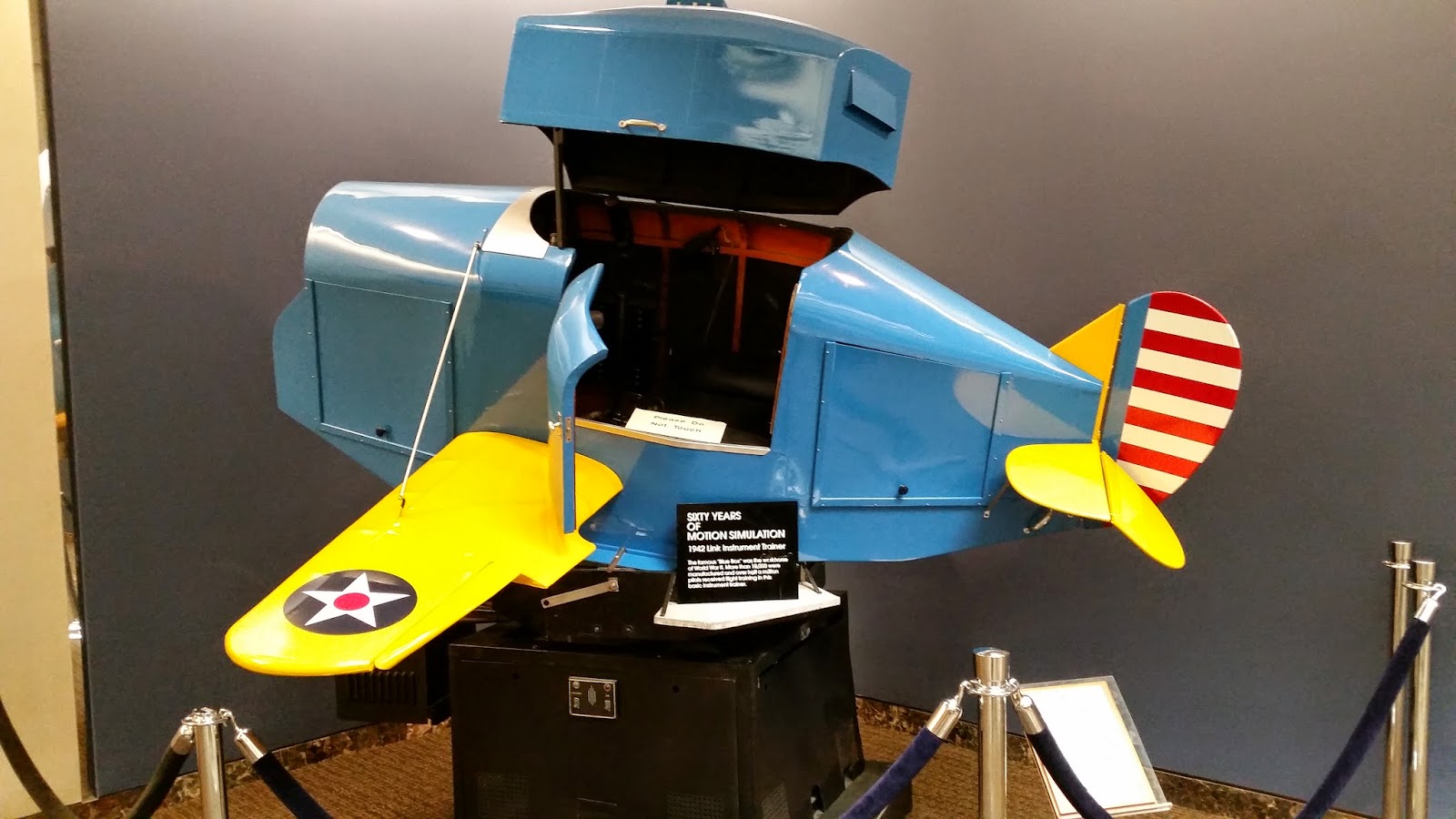Sim Session #1 is done and according to our instructor we're doing well.
There's a bit of history behind the Simulator here in Dallas. This Lear 35 / 36 simulator is the very first approved Level C Simulator in the world! I have a feeling if and when it gets retired it may end up in the Smithsonian or Somewhere like that.
The Plaque Below The Sim
A bit of a background on the different types of simulators...
CPT - Cockpit Procedures Trainer - May be an actual cockpit or cardboard mockup, used to familiarize the crew with switch locations, drills, cockpit flows, and procedures prior to entering the simulator or actual aircraft. This can also stand for "cockpit procedures training" if the training is undertaken while "hangar flying"
FTD - Flight Training Device - This is the type of simulator that you would find at your local flight school. It can represent multiple different types of aircraft in various operating environments to better prepare the pilot for the real aircraft.
FFS - Full Flight Simulator - An aircraft specific training device that in some cases (we'll see this with the levels below) may actually be substituted for the aircraft itself. This is known as ZFT Training (Zero Flight Time). As an example, an airline pilot will perform all of their training in the simulator and their first flight in the actual aircraft will be a "revenue flight" with passengers aboard.
A full flight simulator must be able to replicate all or a few of the the 6 Degrees of Freedom (DoF):
Pitch (Tilting Foward / Back)
Roll (Tilting Sideways)
Yaw (Rotating)
Heave (Moving Up and Down)
Sway (Moving Sideways)
Surge (Moving Forwards / Backwards)
Basically the only difference between a Level C and Level D simulator is the visual simulation of the outside world to the pilots. The horizontal field of view for each pilot in a Level C is 75 degrees, vs 150 degrees for a Level D Simulator. Advanced techniques are used to avoid distortion and enhance depth perception in modern Simulators. The visual signal is passed through special filters and reflected by specific mirrors and screens in order to prevent the distortion of the artificial environment.
This is where it all started... The Link Trainer
We've Come A Long Way
Also built by The Link Company
A Cockpit Procedures Trainer
The Interior of the Simulator. The little Lear Cockpit looks a lot like a fireplace in a room.
The monitor at the back is the Instructors's Station.
Before The Simulator - One Must Attend Classes
My Course Materials (And My Lunch)
Looking Down from the Classroom
In Front of the Waterfall
Looking Up
It's a beautiful facility here in Dallas with about 20 simulators in the building. All manner of corporate aircraft and regional airliners.
That's about all for now. The sim is going great, and I'll keep you posted as to how we're doing.
In closing, here we are parked at the gate after a successful first session.











No comments:
Post a Comment